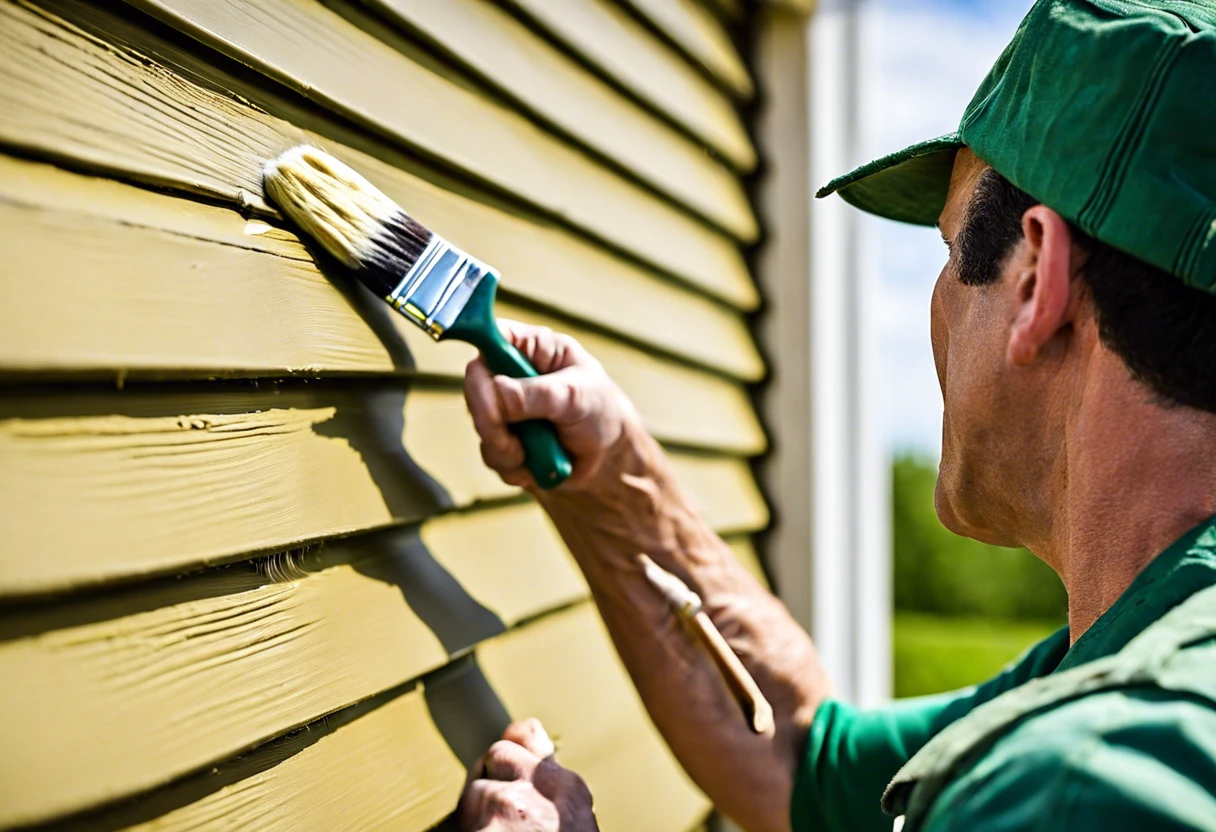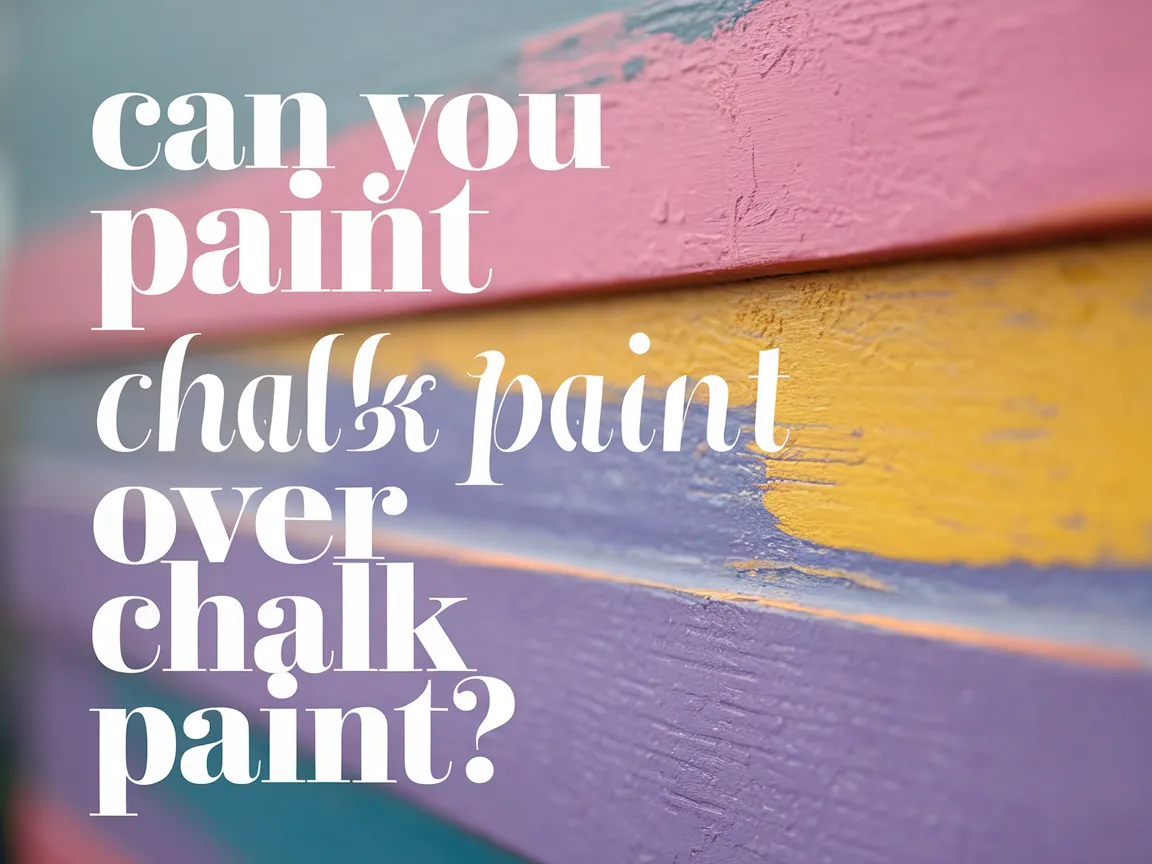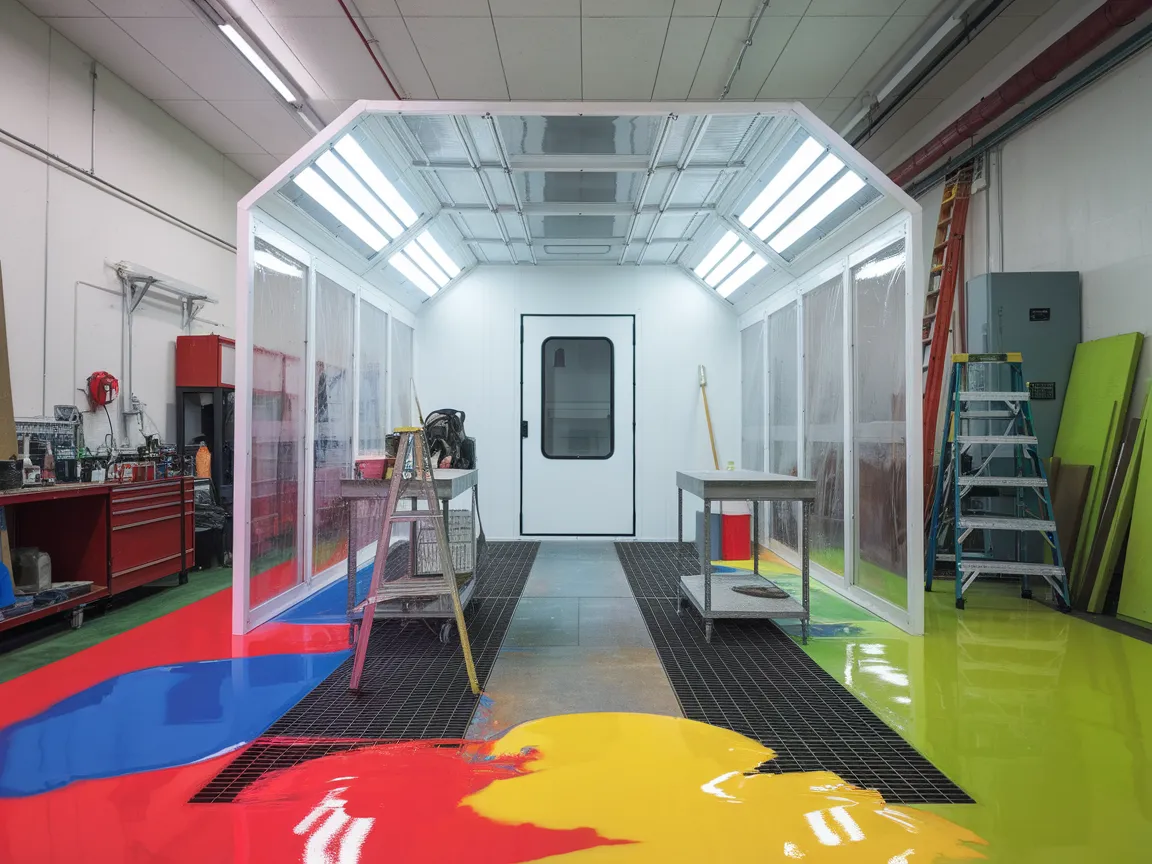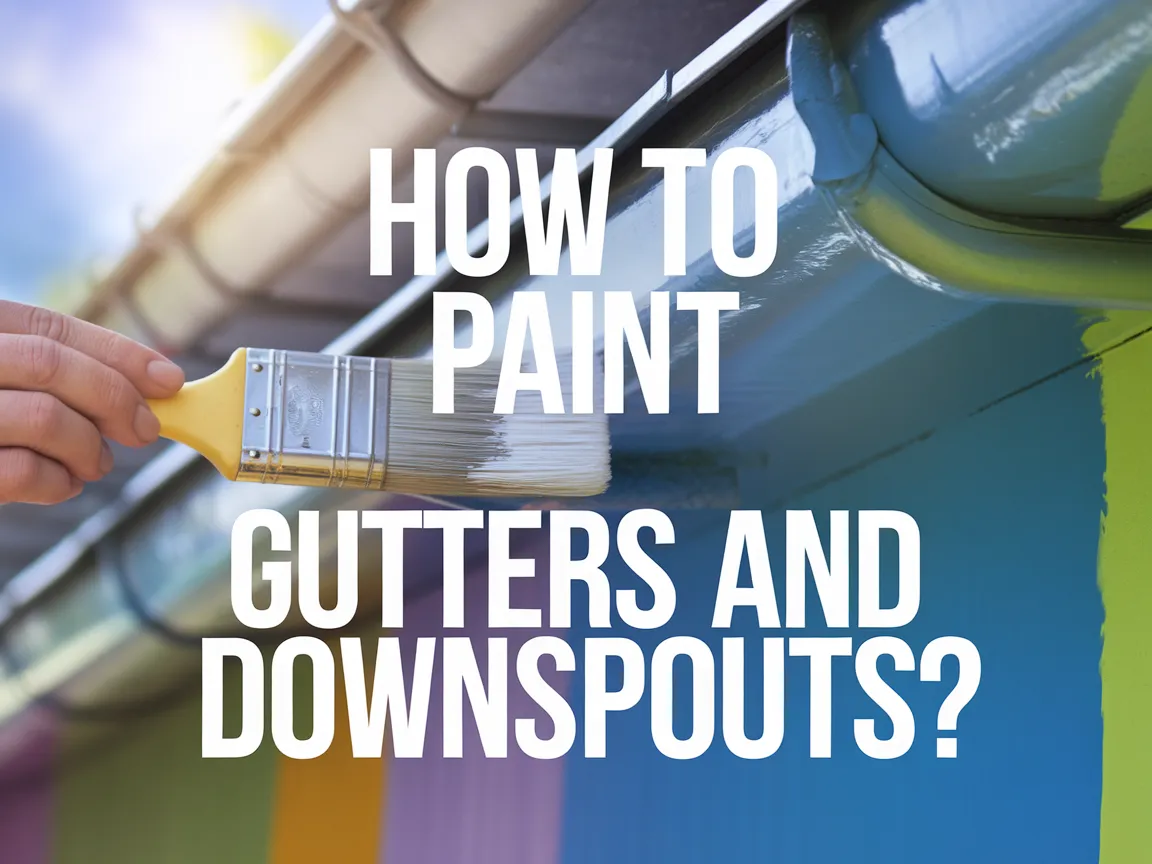Can You Paint Vinyl Siding?
Vinyl siding is like a colorful skin for a house, covering walls just like a raincoat. It keeps homes warm and dry while looking great!
Can you paint vinyl siding? It’s super important to know if you can because a painting exterior vinyl surfaces can transform your home’s look. I remember the first time I painted my vinyl siding; it felt like giving my house a brand-new outfit!
In this article, we’ll cover essential preparations, the step-by-step process for painting vinyl siding, recommended paint types, common issues, and creative DIY ideas. Get ready to discover if you can paint vinyl siding and how to do it right!
Contents
- 1 Can You Paint Vinyl Siding?
- 2 What is Vinyl Siding?
- 3 Essential Preparations Before You Start Painting Vinyl Siding
- 4 Step-by-step Process for Painting Vinyl Siding
- 5 Recommended Color Palette for Painting Vinyl Siding
- 6 Types Of Paint Suitable for Vinyl Siding
- 7 Factors Affecting the Painting Process Of Vinyl Siding
- 8 Understanding Vinyl Siding Durability and Lifespan
- 9 Eco-Friendly Options for Painting Vinyl Siding
- 10 Comparing Costs of Painting Vinyl Siding vs. Replacement
- 11 Common Issues Encountered When Painting Vinyl Siding
- 12 Common Myths About Painting Vinyl Siding
- 13 Maintenance of Painted Vinyl Siding
- 14 Finishing Touches for a Professional-looking Paint Job
- 15 Frequently Asked Questions About Painting Vinyl Siding
- 16 Conclusion: Final Thoughts on Painting Vinyl Siding
- 17 Additional Resources
Can You Paint Vinyl Siding?
Yes, you can paint vinyl siding. But, use a high-quality acrylic exterior paint. Choose a light color to avoid heat absorption. Always clean the surface first for the best results!
The Finishing Touch
A freshly painted wall is a blank canvas. The best way to bring your room to life is with a single piece of statement art that ties everything together.
Browse Wall Art at Big Wall DecorWhat is Vinyl Siding?
Vinyl siding is a plastic exterior material made mainly from polyvinyl chloride (PVC). It’s designed to mimic the look of wood and other materials while providing excellent durability, weather resistance, and low maintenance, resulting in a product that typically lasts over 30 years. If you’re experiencing unexpected surface irregularities, you might want to explore common paint bubbling issues that can affect your siding’s appearance.
Now, can you paint vinyl siding? I remember chatting with a neighbor who tried to freshen up his house with paint. The results weren’t what he expected!
I’ve used vinyl siding for remodeling my family’s home. We chose it because it has a No. 186 insulation rating, which helps save on energy bills by improving thermal efficiency. When considering whether to paint vinyl siding, remember that good surface preparation is essential! If you’re wondering about painting different surfaces, vinyl siding maintenance techniques can help you achieve the best results.
Essential Preparations Before You Start Painting Vinyl Siding
What do you need to do?
- Cleaning Solution: Use a quality cleaner, like Krud Kutter or a mix of TSP (Trisodium Phosphate) and water. Cleaning is essential to remove dirt and mildew before painting.
- Paint Primer: Choose primers such as Zinsser Bulls Eye 1-2-3, designed specifically for plastics. This enhances paint adhesion to your vinyl siding.
- Exterior Acrylic Paint: Select a high-quality paint, like Benjamin Moore Regal Select, with a recommended weight of 1.2 kg/L (10 Lbs/gal) for durability.
- Brush & Roller Set: Get a synthetic brush and a 1/2 inch (1.27 Cm) roller for effective paint and primer application.
We have now covered essential preparations for painting vinyl siding. Next, we’ll discuss the step-by-step process for the painting.
Also See: Can You Use Interior Paint Outdoors? Know the Risks!

The Finishing Touch
A freshly painted wall is a blank canvas. The best way to bring your room to life is with a single piece of statement art that ties everything together.
Browse Wall Art at Big Wall DecorStep-by-step Process for Painting Vinyl Siding
Now, we’ll cover the steps to refresh your vinyl siding with paint. Follow these steps for a successful project.
-
Clean the Vinyl Siding Thoroughly
Start with a thorough cleaning—use a pressure washer at about 1200 to 1500 PSI (8.3 To 10.3 Mpa) to remove dirt and mildew. If you notice green residue, a mixture of water and a bit of bleach (1 Part Bleach to 10 Parts Water) works wonders.
When preparing surfaces for painting, safety matters as much as technique. You might wonder about alternative cleaning methods that could protect your skin during painting.
This step prevents dirt from interfering with your paint finish. A clean surface ensures better paint adhesion and a longer-lasting finish.
-
Prepare the Area for Painting
Lay down tarps or drop cloths to catch any drips—I recommend a margin of at least 3 ft (0.91 M) around the area. Cover areas that shouldn’t get paint on them, like windows and doors.
Keep all your brushes and squeegees close for easy reach. Spending 30 minutes on prep can save you hours of cleanup later!
-
Select the Right Paint for Vinyl Siding
Choose a 100% acrylic exterior latex paint specially designed for vinyl siding. These types are flexible, preventing cracks in varying temperatures.
I’ve found that light colors perform better—you’ll be less likely to overheat your vinyl from heat absorption. Dark shades can absorb too much heat and may warp the siding!
-
Apply Primer (if Necessary)
If you chose a drastically different color, using a primer can prevent bleed-through. Use a primer formulated for vinyl to prevent peeling; let it dry for at least 1-2 hours.
Approximately 1 gallon (3.78 L) of primer will cover 200 to 300 sq ft (18.6 To 27.9 M²). Check with local suppliers for compatibility with your selected paint to ensure a harmonious blend.
-
Paint the Vinyl Siding
Use a high-quality paint sprayer for an even coat. Start painting from top to bottom—work in small sections of about 5–10 sq ft (0.46–0.93 M²) for better control.
A first coat needs roughly 24 hours to cure, depending on the paint manufacturer’s guidelines. A second coat is usually needed for full color depth, so don’t skip it!
-
Allow Adequate Drying Time
Let your freshly painted vinyl siding dry completely. Depending on humidity, this may take 24 to 48 hours in optimal conditions.
Wait the full 48 hours before exposing painted areas to water, such as rain or sprinklers; you want your masterpiece to set perfectly!
That covers the detailed process for painting vinyl siding. Let’s now take a look at suggested color options for your project.
Recommended Color Palette for Painting Vinyl Siding
I recommend the “Coastal Breeze” palette, which features soft, light colors that evoke serenity and freshness, perfect for enhancing vinyl siding.
| Color Box | Hex Code | Color Name |
|---|---|---|
| #B2DFEE | Ocean Blue | |
| #E0F7FA | Soft Sky | |
| #F1F8E9 | Seafoam Green |
We’ve wrapped up the recommended color palette for painting vinyl siding here. Let us turn our attention to… types of paint suitable for vinyl siding.
Types Of Paint Suitable for Vinyl Siding
Let’s discuss the different types of paint: Latex, Acrylic, Oil-based, and Specialty paints.
-
Latex Paint
Latex paint is popular because it adheres well to vinyl siding. Usually water-based, it expands and contracts with temperature changes, making it ideal for outdoor materials.
-
Acrylic Paint
Acrylic paint offers excellent durability and color retention. It resists mildew and UV rays, helping maintain vibrancy—great for long-lasting beauty on vinyl siding.
-
Oil-based Paint
While oil-based paint provides a smooth finish, it’s less flexible and can crack over time. Please use high-quality primers to prepare (Prep) the surface before applying this paint type on vinyl siding. If you’re considering painting cement surfaces like basement walls, you might want to explore specific techniques for painting cement basement walls effectively.
-
Specialty Paints
Specialty paints adhere directly to vinyl surfaces and often include mildew inhibitors. These paints can withstand harsh weather conditions and significantly extend the life of your vinyl siding. If you’re wondering about proper disposal or recycling of leftover paint containers, you might want to check out how to handle paint cans responsibly.
Here’s what works for me: I prefer Acrylic paint for my vinyl siding. Its durability and color retention really stand out, especially in sunny conditions.
So far we covered different paint types suitable for vinyl siding. Let’s look at the factors impacting the vinyl siding painting process next.

Factors Affecting the Painting Process Of Vinyl Siding
What factors affect painting vinyl siding effectively?
-
Condition of the Vinyl: Old or damaged siding can cause poor paint adhesion.
-
Type of Paint Used: Choosing the right paint ensures durability and finish; not all paints are suitable.
-
Temperature and Humidity: Extreme weather can influence drying time and paint adhesion.
-
Cleaning Prior to Painting: Dirty surfaces can result in paint failure and peeling.
Understanding Vinyl Siding Durability and Lifespan
It’s vital to know how long vinyl siding lasts and its durability before you paint.
- Average Lifespan: Vinyl siding can last over 30 years when maintained. Painting can extend its aesthetic appeal and life.
- Weather Resistance: Vinyl resists harsh weather. It won’t crack or warp when painted with proper materials, ensuring longevity.
- Maintenance: Routine cleaning can prevent mold and mildew, crucial for paint longevity. Clean it every 6 months!
- Warranty: Some manufacturers offer warranties of up to 50 years on quality products. Always check before you paint.
Eco-Friendly Options for Painting Vinyl Siding
Want to keep your project green? Here’s how to choose eco-friendly options:
- Low-VOC Paints: Look for paints with low volatile organic compounds (VOCs) to reduce air pollution. The levels should be below 50 g/L.
- Recycled Materials: Some paints are made from recycled materials, which help reduce waste and environmental impact.
- Natural Finishes: Consider natural paint finishes from brands like Farrow & Ball—they’re eco-conscious and beautiful!
Comparing Costs of Painting Vinyl Siding vs. Replacement
Is it cheaper to paint or replace vinyl siding? Let’s break down the costs:
The Finishing Touch
A freshly painted wall is a blank canvas. The best way to bring your room to life is with a single piece of statement art that ties everything together.
Browse Wall Art at Big Wall Decor| Option | Average Cost (USD) | Longevity | Notes |
|---|---|---|---|
| Painting | $800 – $2,500 | 5 – 10 years | Refreshes the look without major labor. |
| Replacement | $5,000 – $15,000 | 30+ years | Involves higher initial investment but increases home value. |
Want a budget-friendly option? Painting can breathe new life into your home at a fraction of replacement costs!
Common Issues Encountered When Painting Vinyl Siding
When my friend tried to paint vinyl siding, he faced paint adhesion issues. He needed to clean the surface with a pressure washer (At Least 1,380 Kpa or 2,000 Psi) to prevent peeling.
Using a primer designed for plastics improved adhesion. A good spray application provided a smooth finish, achieving a fresh look without damage.
Common Myths About Painting Vinyl Siding
There are a lot of myths around this topic. Let’s clear them up!
-
Myth 1: You Can’t Change the Color of Vinyl Siding
False! You can easily change vinyl siding color. Just choose the right paint and prep well.
-
Myth 2: Paint Will Cause Warping
Not true! As long as you choose light colors and high-quality paint, warping isn’t an issue.
-
Myth 3: Vinyl Siding Can’t Be Painted More Than Once
Actually, you can paint vinyl siding multiple times! Just maintain a good prep routine for lasting results.
Maintenance of Painted Vinyl Siding
After painting, maintenance is key. Here’s what you should do to keep that fresh look!
| Maintenance Task | Frequency | Notes |
|---|---|---|
| Cleaning | Every 6 months | Use mild soap and water to avoid damage. |
| Inspect for Peeling | Annually | Check for areas that may need touch-up. |
| Repainting | Every 5-10 years | Monitor chipping, fading, or color changes. |
Finishing Touches for a Professional-looking Paint Job
After you paint vinyl siding, clean it gently with mild soap and water every six months. For long-lasting results, consider a vinyl-specific sealer rated to protect for up to five years.
Check for chalking or fading using a quick rub test; if you see a white residue, it’s time to repaint. Use a product like Krud Kutter for thorough cleaning before any touch-ups.
If you’re experienced, add a second coat of fade-resistant paint after 48 hours for added durability. Use a spray technique for optimal consistency and quicker drying; aim for at least 161°C (325°F) with airflow. Professional painters often recommend exploring specific paint matching techniques between brands.
Also See: Why is Automotive Paint So Expensive? Learn the Costs
Frequently Asked Questions About Painting Vinyl Siding
Can I Use Regular House Paint on Vinyl Siding?
Yes, you can use regular house paint on vinyl siding, but it needs to be specifically made for vinyl. Regular paint may not adhere well, leading to peeling.
How Long Will the Paint Last on Vinyl Siding?
The paint on vinyl siding typically lasts between 5 to 10 years, depending on quality and environmental conditions. Higher quality paints often contain UV protectors, enhancing longevity.
Do I Need to Sand Vinyl Siding Before Painting?
No, you don’t need to sand vinyl siding before painting it. However, washing it thoroughly prevents dirt from messing up the paint’s adhesion.
Is It Better to Spray or Brush Paint on Vinyl Siding?
Spraying is generally better for painting vinyl siding because it provides an even coat and saves time. A sprayer covers more area without leaving brush strokes.
What Temperature is Best for Painting Vinyl Siding?
The best temperature for painting vinyl siding is between 10°C and 32°C (50°F and 90°F). Painting outside this range risks affecting drying and adhesion.
How Do I Prepare Vinyl Siding for Painting?
To prepare vinyl siding for painting, start by cleaning it with a hose and mild detergent to remove dirt and mildew. A clean surface allows paint to stick better.
Can You Use a Primer on Vinyl Siding?
Yes, using a primer on vinyl siding can be beneficial, especially if you’re changing colors. Primer helps with adhesion and can provide an even base, improving overall coverage.
How Much Paint Do I Need for Vinyl Siding?
Typically, you’ll need about 0.1 liters per square meter (1 Gallon Per 200 Square Feet) of siding. Calculate your total area before purchasing to avoid running short.
Conclusion: Final Thoughts on Painting Vinyl Siding
We covered what vinyl siding is, essential preparations, the step-by-step painting process, recommended color palettes, suitable types of paint, factors affecting painting, common issues, finishing touches, creative DIY ideas, and FAQs.
So, can you paint vinyl siding? Yes, you can! Just ensure you prepare properly, choose the right paint—like acrylic or vinyl-safe—and follow the correct methods for a lasting finish.
For further insights and expert tips, visit Paint Answers.
Additional Resources
- Gurney, J. (2009). Color and Light: A Guide for the Realist Painter. Kansas City, MO: Andrews McMeel Publishing.
- How to Paint Vinyl Siding in 7 Steps🏠🖌️🎨
- Can you paint vinyl siding and trim? – Quora
- Painting vinyl siding on my house question | Professional Painting Contractors Forum
Isabella is a Filipino-American art writer and critic specializing in contemporary painting, blending her Filipino heritage with global art trends. She holds a BFA from California State University, Long Beach, and a Minor in Art History from the University of the Philippines. Isa has experience as a Gallery Assistant, Art Appraisal Specialist, and Social Media Creative for Art & Design.
Exterior, Siding









